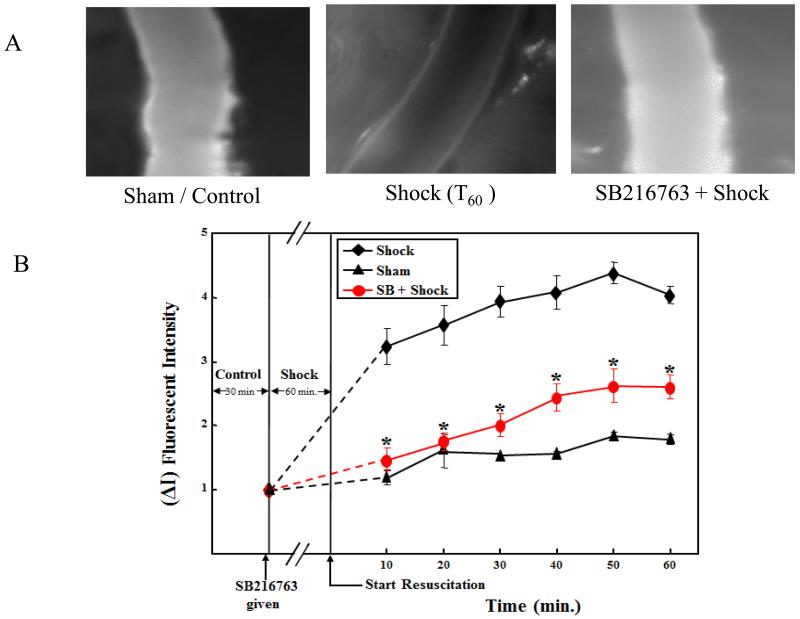Figure 1.
GSK-3 specific inhibitor SB216763 protect against microvascular hyperpermeability following hemorrhagic shock (HS). Fig 1A; shows images of rat mesenteric post-capillary venules from control or sham treatment, HS for 60 minutes followed by resuscitation for another 60 min (T60), and SB216763 treatment in HS are shown. FITC-albumin extravasation into the extravascular space after HS (T60) is significant compare to the control or sham treatment. However, SB216763 treatment prevented FITC-albumin extravasation in rat mesenteric post-capillary venules. Fig 1B; shows graphical representation of increase in microvascular permeability following HS compared to control or sham group. SB216763 treatment decreases microvascular hyperpermeability following HS (*P < 0.05; n = 5).

